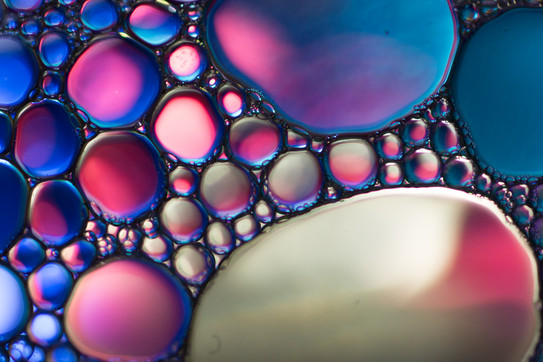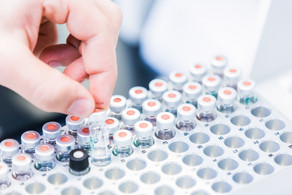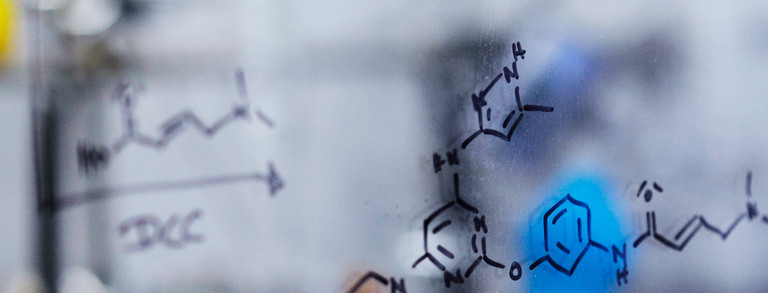Multiphase Systems
Liquid Multiphase Systems based on polar solvents, such as water, are very promising from many aspects for the separation of homogeneous catalysts and their recycling.
Many approaches address the fundamental challenge of efficiently separating homogeneous catalysts from the formed products to realise their recycling. One of these approaches are liquid multiphase systems, in which the homogeneously dissolved catalyst is immobilised in a liquid phase. Typically, polar solvents are used for this purpose. This approach ensures that the desired, typically non-polar organic products can be separated after the reaction due to their low solubility. This approach seems particularly promising, also considering industrial applications: The performance of the homogeneous catalyst has not to be compromised and the separation of the two liquid phases takes place as a comparatively simple unit operation.

Together with researchers from other universities and research institutes, we are working together in the Collaborative Research Centre/Transregio 63 “Integrated Chemical Processes in Liquid Multiphase Systems” (InPROMPT). The CRC/TR 63 has been funded by the Deutsche Forschungsgemeinschaft e.V. (DFG) since 2010.
We are involved in that consortium with our research dedicated to so-called Thermomorphic Multiphase Systems (TMS), which are characterised by exploiting temperature-dependent miscibility gaps of selected solvents. Thus, a single-phase mixture without mass transfer resistances is obtained at elevated reaction temperature. When this mixture is cooled, two phases are formed, one of which ideally contains the catalyst and the other the formed product.
For our recent review on this, see:
(Bianga, et. al. Chem. Eur. J., 2019, 25, 11586-11608.)
Recently, we started a collaboration with Université d'Artois from France on cyclodextrins as phase transfer agents for aqueous phase hydroformylation of long-chain alkenes, see (Künnemann, et al., Green Chem.2020, 22, 3809–3819)




